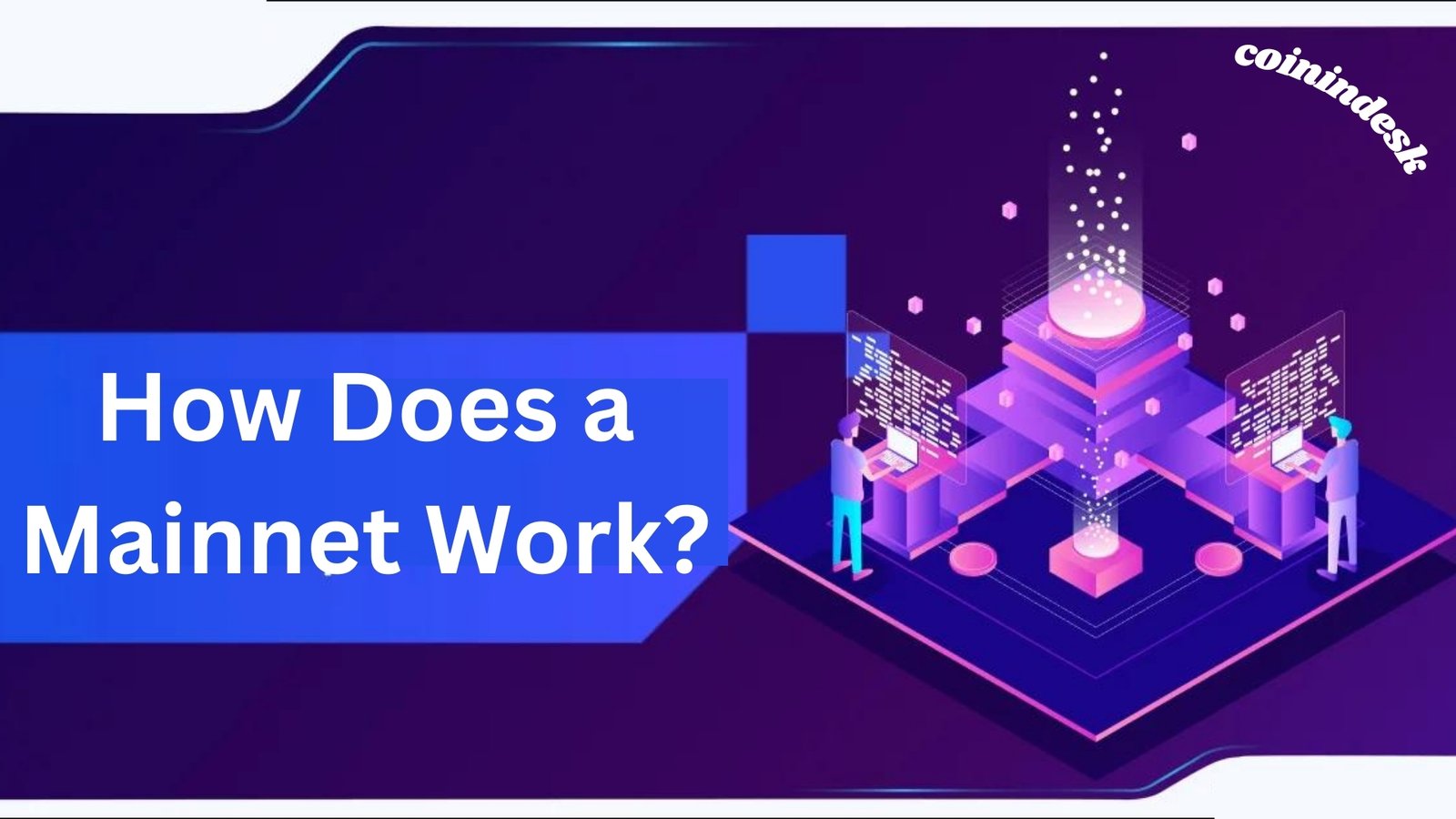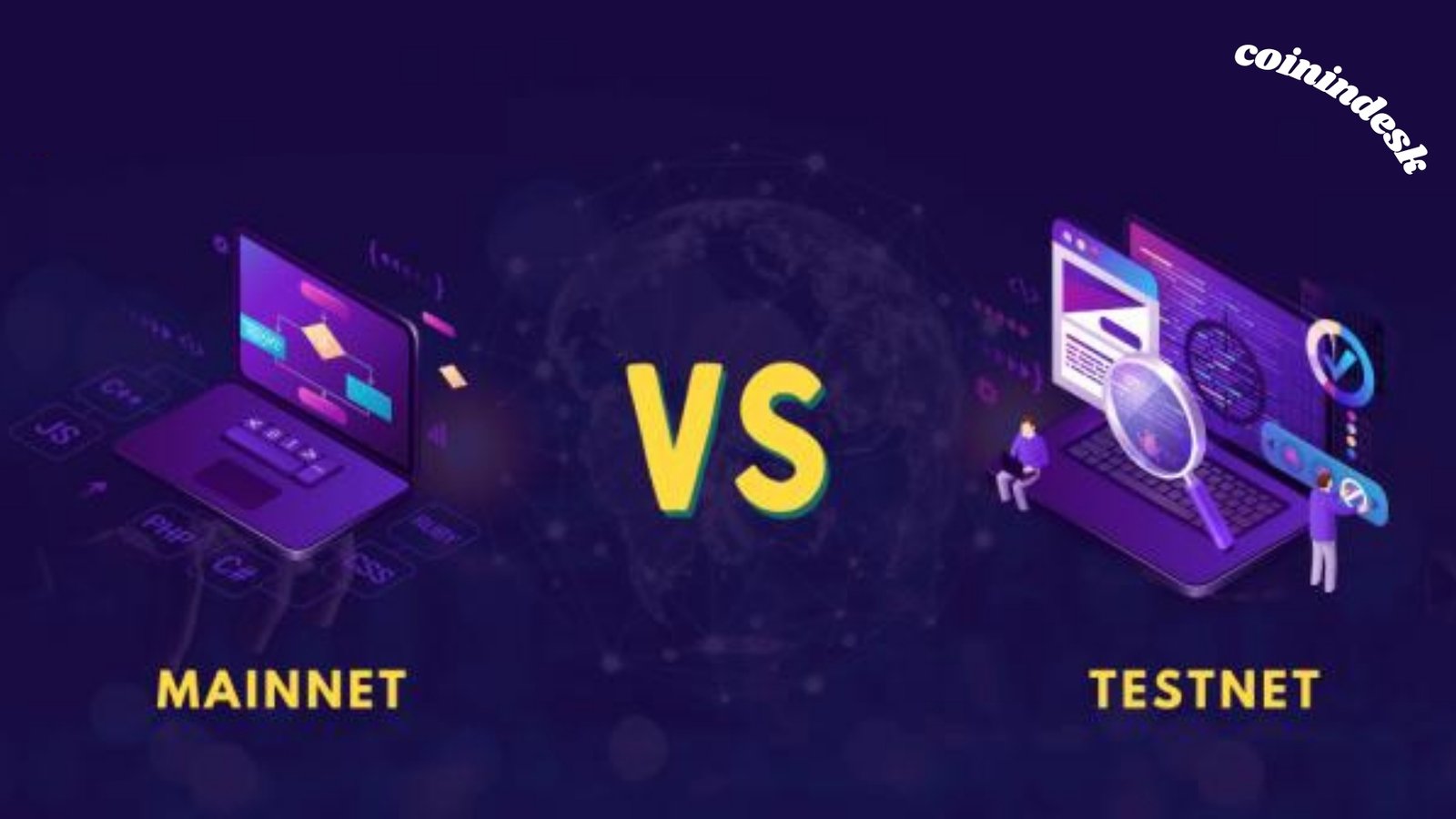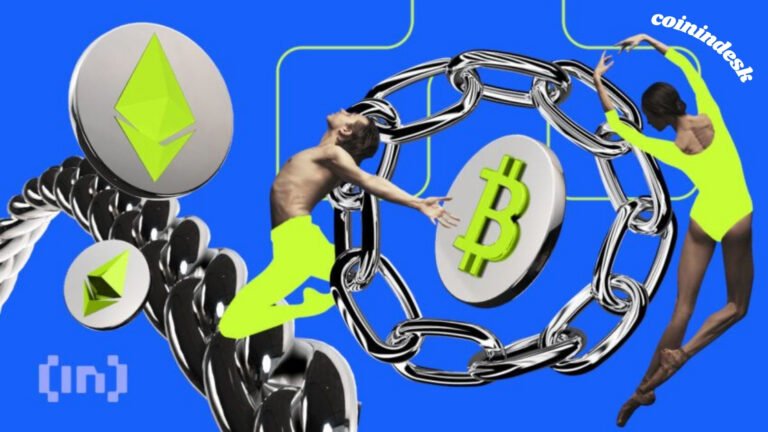Mainnet in Cryptocurrency. A mainnet, an abbreviation for “main network,” is the principal blockchain network that hosts native cryptocurrency and most of the blockchain’s transactions. It results from development efforts and is thus distinct from testnets and experimental environments. A digital asset is crucial to the network’s functioning; the main net’s cryptocurrency distinguishes it. This local currency relies on governance processes, staking structures, and transaction fees.
It is common practice for blockchain platforms to conduct testnet launches before main net launches. These sandboxes allow developers to try different scenarios without dealing with cryptocurrencies. Once a platform is considered ready, it is moved to the main net, where tangible assets are traded. The mainnet employs a specific consensus mechanism to verify and authenticate transactions, like proof-of-work (PoW) or proof-of-stake (PoS).
The consensus mechanism determines the importance of main net validators and miners. Miners in proof-of-work networks solve complicated mathematical problems to validate transactions, add blocks to the blockchain, and earn Bitcoin. In contrast, proof-of-stake validators generate blocks based on the amount of Bitcoin they control and are willing to “stake” as security. Blockchain networks vary in decentralization, but many magnets require it. Decentralization increases validation node participation. The mainnet is safe and immutable; therefore, verified transactions cannot be modified.
Smart contracts and decentralized apps (DApps) enhance the functionality of magnets. Regular upgrades to mainnets can fix security vulnerabilities or add new features but can also cause forks. Changes that are forks can be either “soft” (compatible with older versions) or “hard” (incompatible with older versions).
Users can send and receive cryptocurrency transactions more efficiently and communicate with the main net through cryptocurrency wallets. Exchanges are crucial to the main net’s native coin trading capabilities because they provide users with accessibility and liquidity.
How Does a Mainnet Work?

For a blockchain platform to execute and process transactions while maintaining the integrity of the distributed ledger, several critical components must be present in the mainnet. A manner consists of the following essential components:
Blockchain protocol
The mainnet follows the rules and procedures set out by a specific blockchain protocol, which validates and adds transactions to the blockchain. Blockchain protocols include things like Ethereum and Bitcoin. Ethereum is based on the Ethereum protocol, whereas Bitcoin is based on the Bitcoin protocol.
Native cryptocurrency
A native cryptocurrency is on every mainnet and used for many network purposes. These include participating in governance processes, paying transaction fees, and compensating validators (who could be miners or stakeholders). For instance, Bitcoin (BTC) is used for the Bitcoin mainnet, and Ether (ETH) is used for the Ethereum mainnet.
Consensus mechanism
The consensus mechanism is the process by which the network agrees on the present state of the blockchain. Popular methods for reaching a consensus include proof-of-work (PoW), proof-of-stake (PoS), delegated proof-of-stake (DPoS), and alternatives. This system prevents transactions from being double-spent.
Miners or validators
As mentioned, miners tackle complex mathematical puzzles in PoW networks, whereas validators in PoS networks are selected according to the quantity of cryptocurrency they possess and are prepared to stake.
Decentralized nodes
Nodes are individual computers or servers that store a complete copy of the blockchain in a blockchain network. They talk to each other until they agree on the blockchain’s status. A more significant number of distributed nodes can strengthen the network’s decentralization and security.
Smart contracts
A smart contract is an agreement whose terms are encoded to allow it to execute itself. It is compatible with many magnets. “Smart contracts” automate and enforce the performance of contractual obligations without the need for intermediaries.
Decentralized applications
DApps are blockchain-based programs that use smart contracts to offer decentralized features and services. They frequently engage with the native coin, adding to the mainnet’s overall functionality.
Wallets
Wallets are essential for securing and accessing cryptocurrency holdings. Users interact with the mainnet through cryptocurrency wallets, which store their private keys and enable them to send, receive, and manage their digital assets.
Exchanges
Cryptocurrency exchanges facilitate the trading of native cryptocurrencies on the mainnet. Users’ ability to purchase, sell, and exchange digital assets gives the market liquidity.
Governance mechanisms
Participants on specific magnets can propose and vote on major concerns like protocol changes. These techniques fortify the blockchain network’s democratic and community-driven features and facilitate decentralized governance.
Importance of Mainnet for Users and Developers
On the main net, users can conduct real transactions and securely handle assets, and developers have a platform to install innovations like smart contracts and decentralized applications. Users and developers rely on the main net as an essential component of the blockchain ecosystem. In the eyes of the users, the main net is the dynamic, real-life environment where transactions occur, and the local coin has many practical applications. Since it ensures the security and immutability of transactions, users can have confidence in the integrity of their digital assets.
Wallets for cryptocurrencies facilitate transactions between users and the mainnet, letting them send, receive, and manage their holdings. Users can trade and have access to liquidity on mainnet bitcoin exchanges, enhancing the value of their assets.
Developers have the perfect setting on the main net to test and release decentralized applications and smart contracts. This marks the transition from creating and testing in controlled environments, such as tests, to putting their inventions into practice in the real world. Developers showcase the functionality and usefulness of their blockchain technologies on the main net.
In addition, the main net’s decentralized structure and consensus procedures provide a firm foundation for building secure, transparent, and unhackable apps. User involvement and innovation on the main net develop and expand the bigger blockchain ecosystem.
Testnet vs. Mainnet

While the main net is the live, operational blockchain network, the testnet is a virtual environment where cryptocurrency experiments can be conducted. Testnets and main nets perform different tasks during blockchain development. The purpose of testnets is to give developers a place to try out new features or apps without actually using cryptocurrencies. This way, they can debug and optimize their code in a risk-free environment.
The mainnet is the live and active blockchain network where real cryptocurrency transactions occur. This real-life scenario presents all the benefits and drawbacks of utilizing the production version of the blockchain.
Mainnet Deployment Issues for Developers
Blockchain developers face many hurdles while deploying magnets, including security, scalability, interoperability, compliance, and governance. To overcome these obstacles and provide a smooth, user-centric blockchain experience, they must conduct thorough code audits, build their networks architecturally, and adhere to regulations. Mainnet deployment is a significant challenge for blockchain developers. There are practical considerations to remember while moving from a controlled, risk-free environment on testnets to the main net for development.
Another challenge is securing decentralized applications and smart contracts to protect users’ assets. Developers must conduct code audits and tests to discover vulnerabilities because any slip-up could result in financial losses or exploitation. Scalability is another important consideration when launching a mainnet.
As the number of users grows, the network’s capacity must be able to handle more transactions without compromising speed or efficiency. Network design and consensus procedures must be carefully considered to balance decentralization and scalability.
Interoperability is another area of challenge. Developers should ensure that other decentralized platforms, protocols, and external systems can communicate smoothly with blockchain to establish a cohesive ecosystem. Because developers must adhere to ever-changing legislative frameworks, which may vary globally, monitoring regulatory compliance becomes even more important on the main net.
Managing network upgrades or hard forks without impacting current operational services requires careful planning and community cooperation. During the mainnet deployment process, developers must address concerns related to scalability, governance, compliance, interoperability, and security to ensure the blockchain is secure and easy to use.


